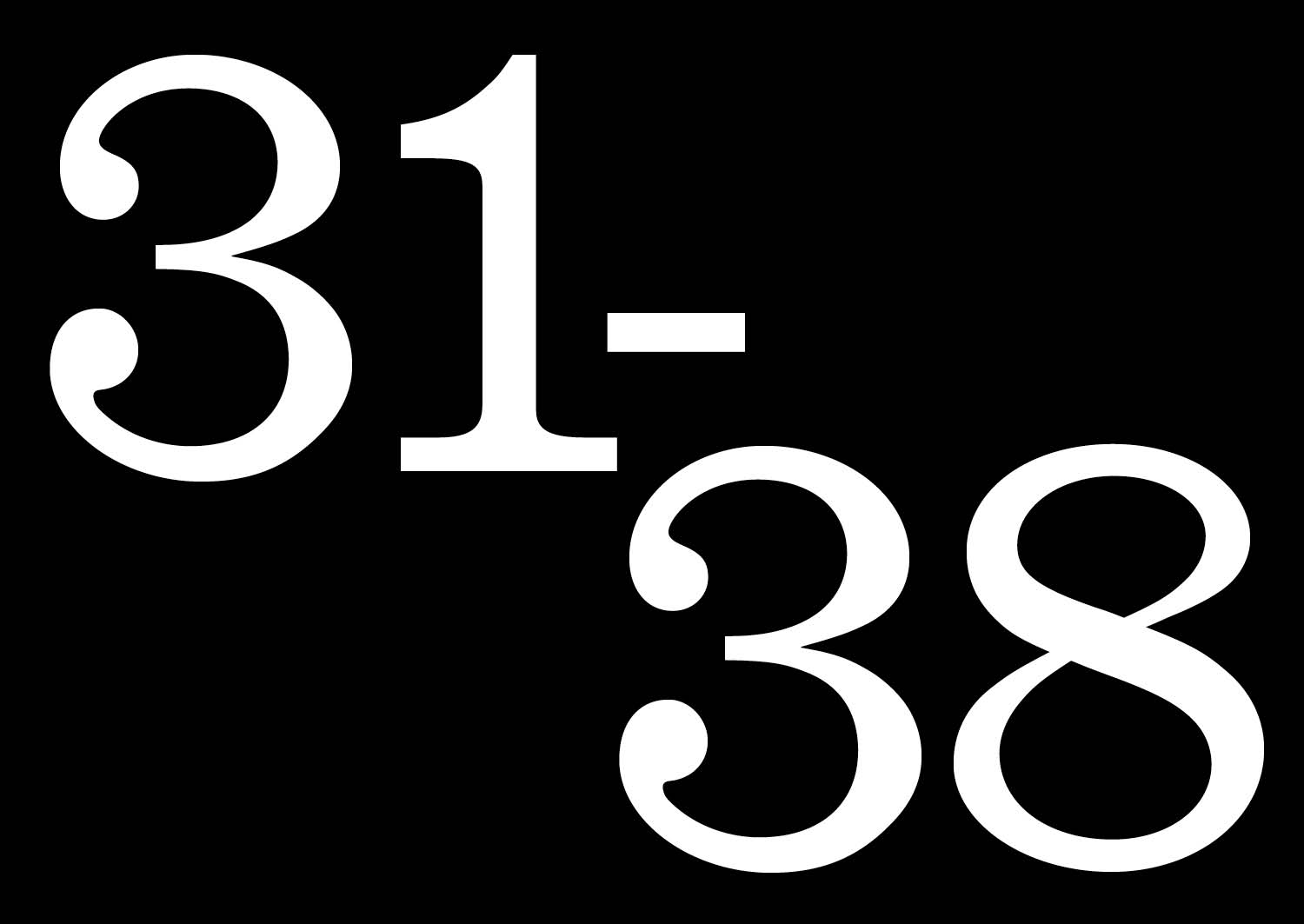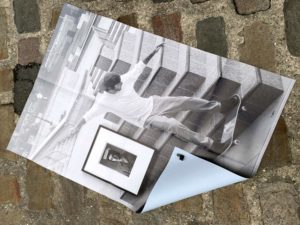Order Subscription, 31st to 38th issue

Issues 31, 32, 33, 34, 35, 36, 37 & 38
8 × 20 pages and sometimes more
21 × 29,7 cm, CMYK
Design: Syndicat
2021-2022
Order Subscription, 31st to 38th issue
Issues 31, 32, 33, 34, 35, 36, 37 & 38
8 × 20 pages and sometimes more
21 × 29,7 cm, CMYK
Design: Syndicat
2021-2022
n°02 — A technical platform: Colorlibrary.ch by Maximage. Author: Manon Bruet
Sold Out
Author: Manon Bruet
12 pages, 21 × 29,7 cm, black and cyan + 1 A2 poster, 3 PMS
+ 1 A2 poster, CMYK (reserved for subscribers) (sold out)
8th November 2017
ISBN: 979-10-95991-04-5
ISSN: 2558-2062
Sold Out
Author: Manon Bruet
12 pages, 21 × 29,7 cm, black and cyan + 1 A2 poster, 3 PMS
+ 1 A2 poster, CMYK (reserved for subscribers) (sold out)
8th November 2017
ISBN: 979-10-95991-04-5
ISSN: 2558-2062
The Workflow research project, run by Tatiana Rhis, Guy Meldem, and Julien Tavelli and David Keshavjee (Maximage) at the Écal, is interested in current technologies of the printed object. It consists of a series of experiences that attempt to circumvent currently available production technologies, provoking coincidences and accidents with the goal of obtaining new outcomes.
More than simply questioning the possible circumvention of tools, Workflow explores technicality, modes of functioning, and flaws. In this way, the programme pursues the field of experimentation opened up by the Swiss studio Maximage since 2008. In the context of their degree project at the Écal, Julien Tavelli and David Keshavjee already combined manual and digital techniques so as to develop their own production tools, and notably their own printing methods. From their experiments have emerged, among other things, the Programme typeface, and the Les impressions magiques publication, that appears today as a manifest object of their approach.
One of the first results of the Workflow programme has been the creation of a series of colorimetric profiles that allows the conversion of digital images for printing with one, two, three, four, or five accompanying colors, whether they are basic (CMYK), pastels, fluorescent, or metallic.
The work on these profiles has two aims. It serves to increase the awareness of students at the Écal with regard to the management and theory of color, but it also allows, for the first time, the automation of operations and settings that have until now been done on a case-by-case basis through the manual use of image-editing software and CAD.
Advocating an “innovative” and “professional” solution for the treatment of color, the Écal and the Workflow programme launched the website colorlibrary.ch in 2016 and offered the profiles for sale. The platform appears as an online library that presents a large variety of profiles with different colorful combinations. The different profiles are displayed on screen, applied to images by Iranian photographer Shirana Shahbazi; they seem to replay the codes of Photoshop type images–from the butterfly to the eye, the still life to the waterfall.
Beginning with an analysis of the structure of this platform, the aesthetic and terminological languages that it summons, and their limits, we will open a number of fields of investigation, more widely linked to the question of the tools and modes of production of images.
n°24 — A theater identity: The Schauspielhaus Zürich by Cornel Windlin. Authors: Étienne Hervy and Thierry Chancogne
Authors: Étienne Hervy and Thierry Chancogne
36 pages, 21 × 29,7 cm, CMYK
23th September 2020
ISBN: 979-10-95991-17-5
ISSN: 2558-2062
Authors: Étienne Hervy and Thierry Chancogne
36 pages, 21 × 29,7 cm, CMYK
23th September 2020
ISBN: 979-10-95991-17-5
ISSN: 2558-2062
Designed by Cornel Windlin (with Gregor Huber), the communications of the Zürich Schauspielhaus for the 2009/10 and 2010/11 seasons appeared just as the collaboration between the designers and the theater ended: with the Grand Prix of the Brno Biennial in 2010, where they won first prize in the international competition, with an exhibition in Chaumont the following year at the same time as the Swiss Federal Design Award, a brief appearance in specialist magazines and on specialist sites, and then nothing at all. Once again, Cornel Windlin retreated into the shadows, leaving behind work which asserted itself through both its amplitude and completeness in the heavy silence which remained, and through the multifaceted mass of the media imagery that it reactivated. A series of seasonal posters, event posters, annual and monthly programs, booklets dedicated to each piece, invitations, flyers, graphic materials from the program for younger audiences… everything is here, set in a precisely tuned bold Unica77, digitized by the Lineto foundry with the original team of designers (along with Windlin), all coming together in that blindness inherent to times of eclipse, where the black disk chosen by Windlin as the identity of the Schauspielhaus stands out. Now, a decade later, the idea is to propose a meticulously organized reception, informed by Cornel Widlin and placed in a cavalier perspective by the analysis of Thierry Chancogne.
n°26 — Production process: Print on Demand. Author: Manon Bruet
Author: Manon Bruet
20 pages, 21 × 29,7 cm, CMYK
4th November 2020
ISBN: 979-10-95991-17-5
ISSN: 2558-2062
Author: Manon Bruet
20 pages, 21 × 29,7 cm, CMYK
4th November 2020
ISBN: 979-10-95991-17-5
ISSN: 2558-2062
In 2008, English Graphic Designer James Goggin ran a two-day workshop with design students at the Hochschule Darmstadt in Germany. The object which resulted gradually took on the appearance of a photo album, a typeface specimen, and a color chart. On the cover, the phrase “Dear Lulu, Please try and print these line, color, pattern, format, texture and typography tests for us” is clearly addressed to the online print platform for which this book was proposed as a test.
Ten years later, the offer has become more diverse and the success of such online platforms is undeniable—indeed the phenomenon has spread well beyond the field of publishing. While some bemoan unfair competition for printers, others, professionals and amateurs, see in it a freedom to print and distribute relatively well finished objects at low cost.
The possibilities of these systems of production, are multiple but nonetheless limited, and this obviously raises the question of a possible standardization of forms and formats. However, when it comes to Print On Demand, it seems that the issue is not so much the materiality of an object (the choice of format, paper or a particular manufacture) but rather the actual existence of this object itself, outside of usual channels of production and distribution.
